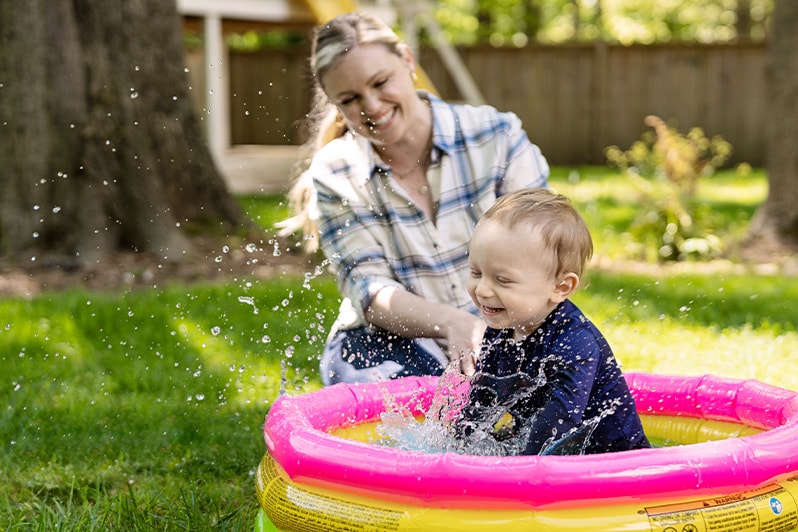Movement Milestones for Your 4-Month-Old

At 4 months, your baby is becoming more playful and interactive. They are also beginning to move with purpose. Read on to learn more about movement milestones that you can expect at 4 months.
In this article:
4-month-old milestones
At 4 months, your baby is more alert and may be using movement to interact more with the world around them. Here are some behaviors you may notice.
Movement milestones to look for at 4 months and tips to encourage your baby:
- Holding their head steady, without support, when being held in your arms. Encourage your baby to hold up their head and look around by surrounding them with an engaging atmosphere, like going outside for a walk together. They are sure to be met with lots of sights and sounds to take in.
- Grasping a toy when you put it in their hand. Diaper changes are a good time for some positive and playful interactions! Next time you change a diaper, try holding a toy near your baby’s hand to help encourage their grasping.
- Using their arms to swing at toys. Try dangling toys above your baby’s head while they’re playing on their back to encourage them to reach and swing for them.
- Bringing their hands and toys to their mouth. Babies learn a lot through their mouth! Like the shape, texture, density and taste of objects. Letting your baby put their hands or baby-safe toys in their mouth is a normal and natural part of development. These skills also help them for when they’re ready to start eating and drinking at around 6 months old.
- Pushing up onto their elbows or forearms when on their tummy. Encourage your baby to do this by propping up a mirror on the floor so they can look at themselves.
- Starting to rock from side to side while on back or tummy. Try placing toys on either side of your baby for them to reach and rock toward.
Your baby may show lots of different emotions as they navigate new milestones, feelings like frustration, discomfort and excitement. This is OK and normal. Your role as the caregiver is to encourage them throughout their movement journey by remembering you can never spoil a baby (or child) by showing love and responding to their needs.
Safety tips for parents and caregivers
As your baby begins to meet these exciting milestones, keep these safety tips in mind:
- Always watch your baby when they’re on an elevated surface, such as a bed, couch or changing table, to prevent falls.
- Always watch your baby while they’re on their tummy. At 4 months, your baby doesn’t have the head and neck control to reposition themselves if their airway is blocked. And remember to follow the ABCs of safe sleep when it’s time for a nap or nighttime sleep.
- Only use infant bouncers, sit-me-up seats or stationary activity centers for 30 minutes (or less) at a time. These devices can help stimulate your baby’s mind, but they are considered confining equipment. That means your baby doesn’t have full range of motion for their body, which they need for proper growth and development.
- Don’t use baby walkers or activity centers that have wheels and allow baby to move. The American Academy of Pediatrics has called for a ban on these devices as they pose a high risk of danger, even with a caregiver present.
Note: If you’re concerned about your baby meeting their milestones, talk with their pediatrician.



